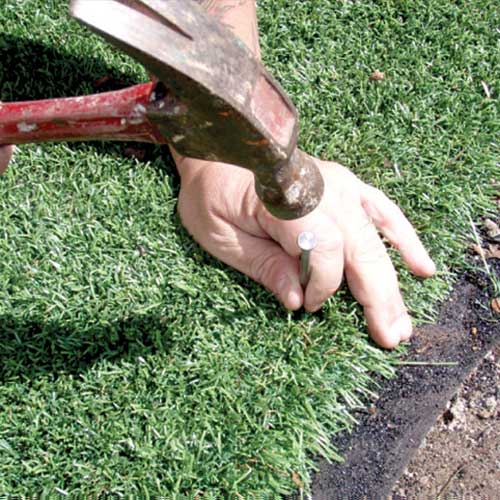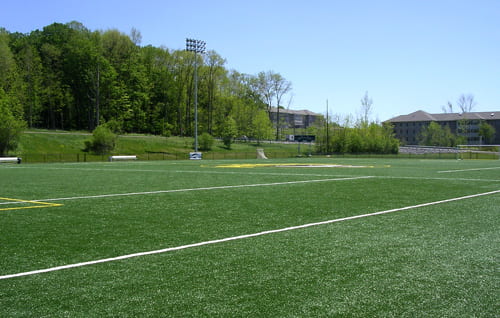Long-Lasting Arizona Artificial Turf for Residential and Business Applications
Long-Lasting Arizona Artificial Turf for Residential and Business Applications
Blog Article
See Why Homeowners Prefer Synthetic Grass for Sustainable Landscaping Practices
As house owners significantly focus on sustainability in landscape design, artificial turf has emerged as a compelling alternative to standard lawn. Its capacity to preserve water, lower upkeep efforts, and lessen environmental impact positions it as a useful choice for those seeking environment-friendly options. The aesthetic appeal and flexibility of synthetic lawn cater to diverse style preferences. Nonetheless, the ramifications of this shift extend past mere ease and looks, triggering a closer assessment of how these choices affect wider ecological end results. What stays to be discovered is the complete scope of advantages that synthetic grass can provide to homeowners and the setting alike.
Water Conservation Perks
One of the most substantial advantages of fabricated turf is its role in water conservation. Typical grass lawns need significant quantities of water to maintain their lush look, commonly bring about overuse of neighborhood water resources, especially in arid areas. In contrast, synthetic grass removes this need totally, as it does not call for watering. This not just conserves water but also minimizes the stress on local water supply, specifically throughout drought conditions.
In addition, the installation of artificial turf can add to an extra lasting landscape. House owners can significantly lower their water expenses, permitting for reallocation of sources to various other environmental efforts or home uses. Additionally, artificial lawn is created to hold up against various weather conditions without the need for supplemental watering, making it an ideal selection for regions dealing with water scarcity.
The ecological benefits extend past instant water savings. By lowering water usage, artificial lawn assists to reduce the influences of climate adjustment, maintaining essential communities that are threatened by too much water removal. As lasting landscape design practices gain traction, fabricated grass emerges as a liable choice for home owners seeking to develop environment-friendly outdoor spaces.
Reduced Maintenance Initiatives
Synthetic grass significantly minimizes upkeep initiatives compared to standard grass lawns. With fabricated grass, house owners can get rid of the time-consuming tasks related to natural landscaping, such as mowing, fertilizing, and weeding. This not just saves important time however additionally decreases physical labor, making yard treatment obtainable for people of every ages.
Typical grass need regular cutting to keep a cosmetically pleasing elevation, whereas man-made grass remains continually lavish without the demand for reducing. Furthermore, house owners no longer need to apply fertilizers or chemicals, which are often called for to maintain natural yard healthy.
In addition, synthetic grass is resilient and resistant, calling for very little upkeep past occasional cleaning and rinsing to eliminate debris. This convenience of upkeep allows home owners to enjoy their exterior areas without the consistent worry of maintenance, giving more time for recreation and family activities. Inevitably, the decreased upkeep initiatives connected with fabricated grass make it an enticing option for those looking see this for a low-maintenance, aesthetically appealing landscape.

Ecological Impact Decrease
There is a growing acknowledgment of the ecological benefits linked with synthetic grass, especially in regards to water conservation and minimized chemical use. Typical yards call for significant quantities of water, especially in drought-prone regions, leading to boosted pressure on regional water sources. On the other hand, man-made lawn gets rid of the demand for watering, substantially decreasing water consumption and promoting sustainability.
In addition, traditional grass upkeep typically entails the application of plant foods, herbicides, and chemicals, which can add to soil and water contamination. Fabricated turf reduces this ecological threat by requiring minimal upkeep and practically eliminating the requirement for hazardous chemicals. This not just enhances dirt health and wellness however likewise protects neighborhood environments from hazardous runoff.
Moreover, the manufacturing of natural lawn yards generally includes the use of nonrenewable fuel sources for cutting and landscape design devices, additional contributing to greenhouse gas emissions. By choosing synthetic grass, homeowners can considerably lower their carbon footprint connected with grass treatment activities.
Visual Charm and Flexibility
Along with its ecological advantages, fabricated grass provides substantial aesthetic appeal and versatility for landscape design. Property owners can accomplish a rich, environment-friendly look year-round, removing the seasonal changes commonly related to natural grass. This constant aesthetic not only enhances the aesthetic appeal of a residential or commercial property however additionally adds to a well-kept and refined appearance.
In addition, artificial turf is offered in a range of appearances, designs, and shades, enabling for modification to match individual choices and layout motifs - Turf installation phoenix az. Whether used in domestic gardens, commercial rooms, or leisure locations, it can perfectly integrate right into diverse landscaping styles, from modern-day minimal to lavish exotic setups
The convenience of synthetic grass prolongs past simple appearance; it can be installed in various areas, including rooftops, patio areas, and also discover here indoor spaces, creating possibilities for special landscaping solutions. In addition, it appropriates for a range of activities, from youngsters's play areas to pet-friendly environments, supplying performance without endangering style.
Ultimately, the aesthetic charm and versatility of synthetic grass make it an appealing option for home owners seeking lasting landscaping solutions that do not compromise charm for ecological responsibility.

Long-Term Expense Cost Savings
One of the most compelling advantages of fabricated turf is its capacity for lasting price savings. Unlike natural lawn, which calls for normal maintenance-- including mowing, watering, feeding, and parasite control-- artificial turf substantially lowers these ongoing expenses.
Additionally, fabricated grass has a life-span of 15 to 25 years, relying on its quality and usage. This toughness lessens substitute prices, making it an extra affordable selection over time. The first financial investment in fabricated lawn can commonly be redeemed with the cost savings accrued over time.
While the upfront price might seem higher compared to turf setup, the advancing cost savings from decreased upkeep and water use commonly exceed these initial expenditures. Ultimately, the fostering of man-made turf not only promotes a lasting landscaping solution yet likewise offers property owners an economically wise choice that aligns with lasting budgeting goals.
Verdict
Man-made turf arises as a compelling choice for sustainable landscape design, offering substantial advantages in water preservation, lowered maintenance efforts, and diminished environmental effect. Its visual appeal and flexibility enhance the visual landscape while straightening with modern-day sustainability goals. Lasting cost financial savings add to its attractiveness for house owners. As neighborhoods significantly prioritize ecologically pleasant techniques, the adoption of man-made lawn stands for a progressive step toward accomplishing resilient and sustainable landscapes.
In addition, artificial lawn is made to withstand numerous weather problems without the demand for extra watering, making it an ideal selection for areas encountering water shortage. (Arizona turf)

Fabricated grass emerges as an engaging choice for sustainable landscape design, providing substantial benefits in water conservation, reduced upkeep initiatives, and reduced environmental influence.
Report this page